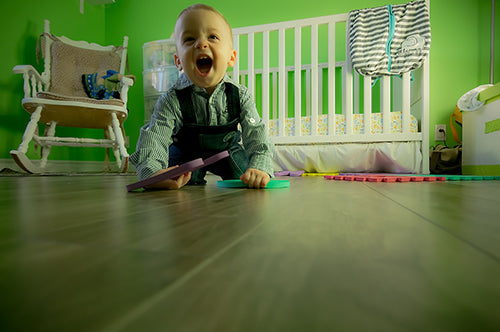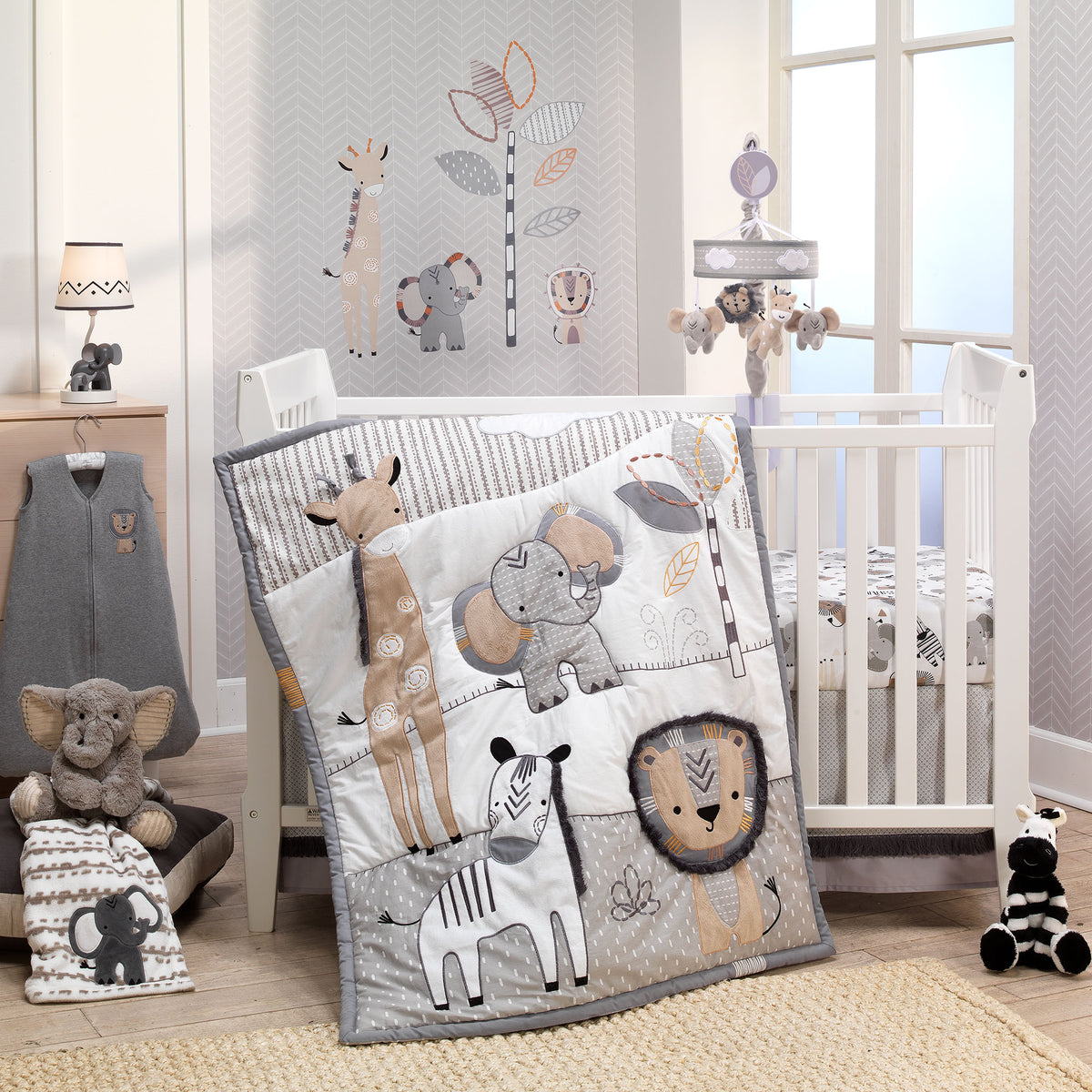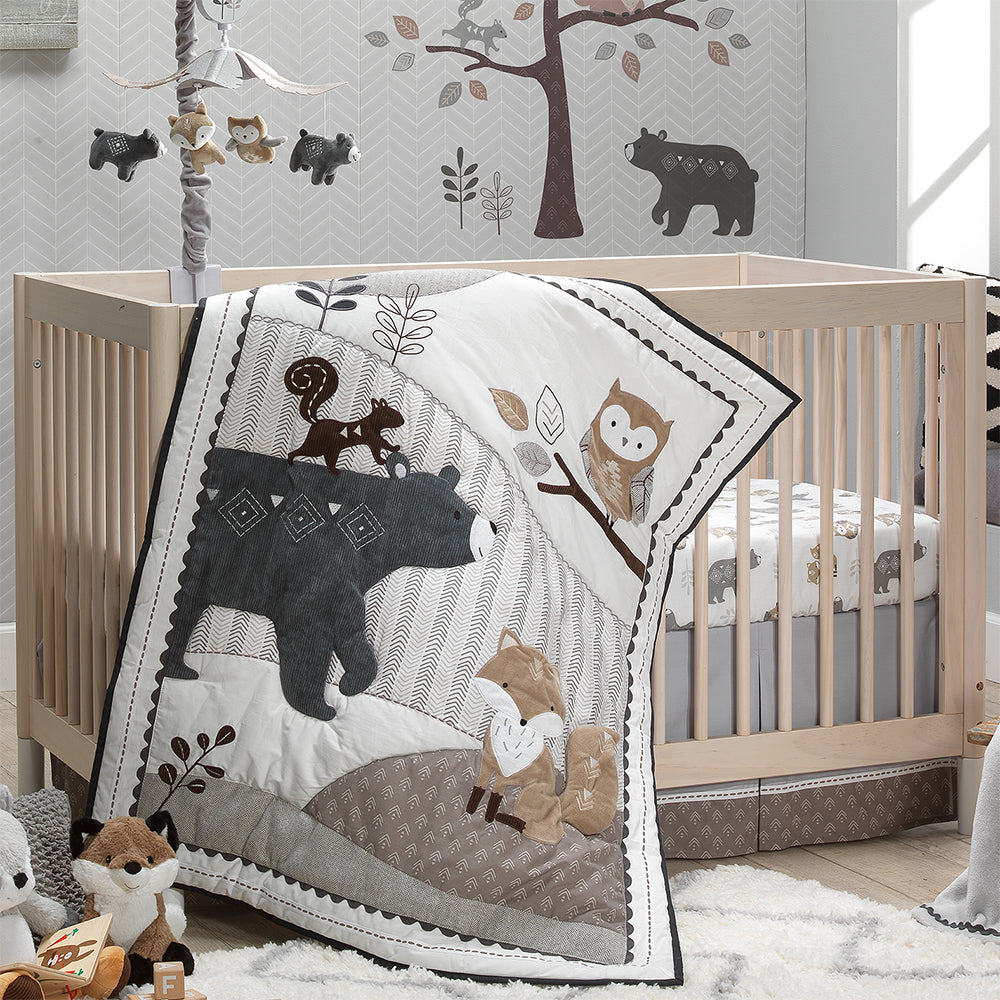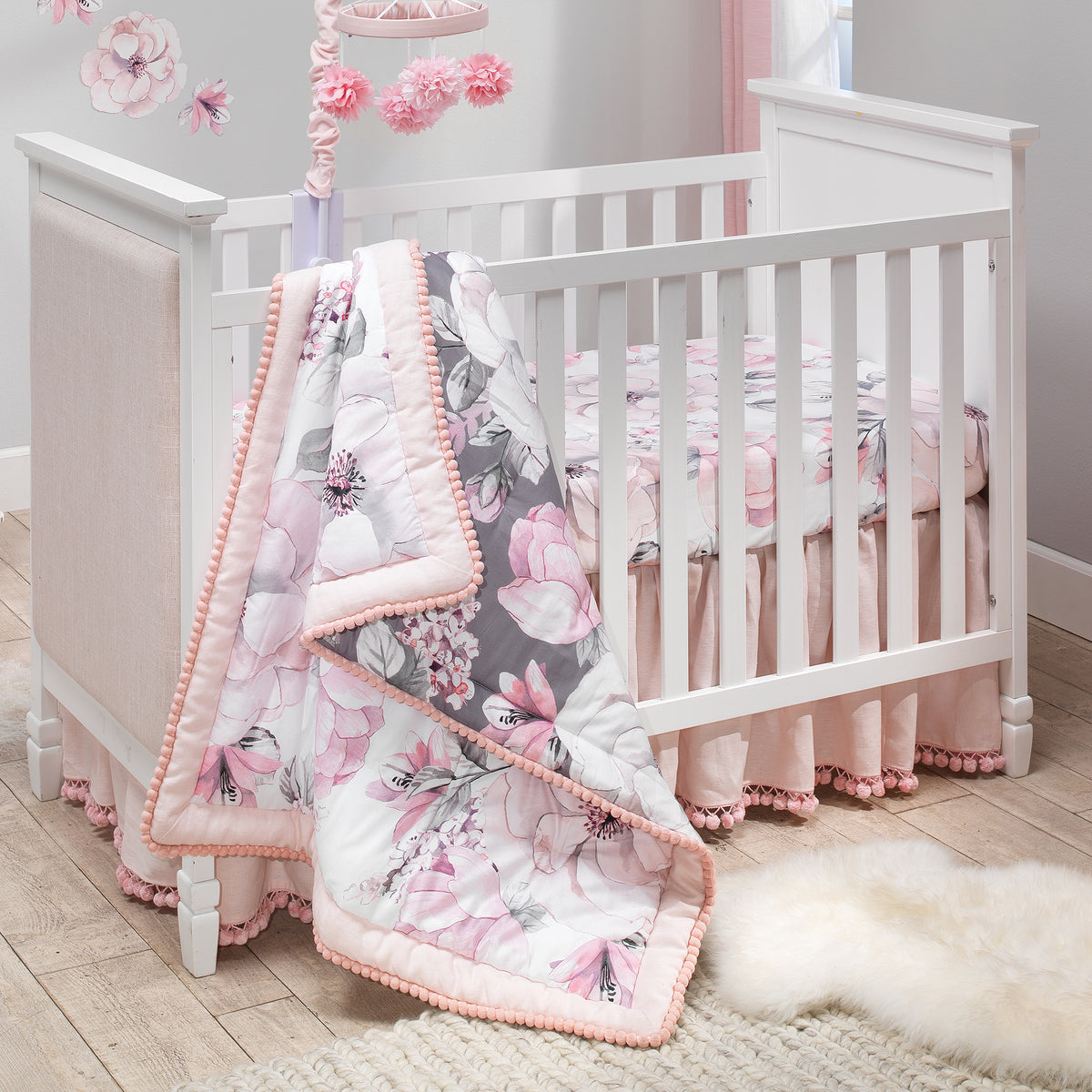
Whether you’re in the final trimester of pregnancy or your baby is quickly becoming mobile, keeping your baby safe is a priority. Once babies can crawl, they can get into everything.
From chewing on the stray Bobbie pin on the floor to exploring the contents of the bathroom cupboards under the sink, it can seem impossible to keep after your mischievous little one.
That’s why you have to baby proof your home. If the task feels overwhelming, that’s because there’s a lot to consider. Not only does it take some time and work to baby-proof your home, it also requires a lot of mental energy. You wonder, “Have I thought of everything?” and “Will my baby really be safe now?”
Don’t worry! We’ve got you covered with a complete guide to baby proofing your home so that you can make sure you’re doing everything possible to keep your baby safe.
When to Baby Proof
If you think it’s too soon to baby proof your home, it’s probably not. Many parents assume they can baby proof when their baby grows older. But, remember, it’s much harder to get things done with a crying, needy infant around. If you have the time and are able to do it before baby is born or becomes mobile, do it!
Secure Furniture
Can you imagine watching a baby precariously stepping on bureau drawers, climbing up to the top? It wouldn’t be a pretty sight. But, babies don’t think about safety. They just want to explore!
So, mount all furniture securely to the wall so that it won’t fall over on top of your child if they climb up on it.
In addition, use corner protectors on sharp-edged furniture to prevent your child from painful bumps.
The Bathroom
In the bathroom, get a toilet lock to keep the seat down. The last thing you want is for your curious baby to explore the water in your toilet!
Electrical Equipment
Electrical cords and outlets are a hazard for your mobile baby. Use outlet covers to cover up any unused outlets. Mount electrical cords safely to the walls and use zip ties so that no loose cords tempt your child to play with them.
Sleep Safe
Sleep safety is one of the main concerns for babies, especially those who are a year and younger. So, make sure the baby bedding you use meets the current American Pediatrics Association recommendations which include the following:
- Use a crib with a firm mattress and a tight-fitting sheet.
- The sleep area should be clear of pillows and blankets until baby is one.
- It’s best for baby to share the room with their parents until they’re one.
After your baby turns one, you can use more crib bedding including a blanket and a stuffed animal.
Consider placing a carpet in your nursery to break falls and make tummy time more pleasant. However, make sure you secure carpets to the floor to avoid slipping.

Close Cabinets
Cabinets all throughout the home should be baby-proofed and properly closed. Principally, cabinets are found in the kitchen and bathroom.
To avoid any accidents, place cleaning supplies, medications, alcohol, and sharp cooking utensils in high cabinets. That way, if your child does happen to get into a cabinet, the most dangerous items will be out of reach.
Pro Tip: Leave one low kitchen cabinet unlocked for your child. Inside, place a few plastic bowls, a pot and some wooden spoons. Your little one will love having a space to explore in the kitchen!
Blinds
Hanging cords dangle, tempting little hands to play. But, cords like this create a hazard, as your baby may become entangled in them. There are a few ways you can deal with this problem including hooks around which you wrap cords, or you can opt to change out your blinds for cordless varieties.
Use Gates Especially Around Stairs
Baby gates are lifesavers when your baby is mobile! Make sure you install them according to the manufacturer’s recommendations.
In addition to using them to block the stairs, you may also want to put up baby gates in other areas so that you can keep your baby contained. For example, you could place a gate at the entrance to your little one’s nursery or playroom.
Plants
Double check to make sure none of your house plants are poisonous. As you’re probably aware, babies put everything in their mouths including leaves or flowers they’ve picked off your house plants. So, do a little research to make sure the plants in your home are safe.
Be Vigilant About Choking and Breakable Hazards
Some items are dangerous for baby, especially those that pose a choking hazard. Here’s a great rule of thumb to keep in mind: anything that can fit in a toilet paper tube is a choking hazard for your baby.
Below is a list of items you might consider:
- Pen caps
- Loose change
- Older sibling’s toys (such as Legos)
- Remote controls (and the batteries inside!)
- Glass or ceramic nicknacks
- Picture frames
- Bathroom items such as shampoo, soap, etc.
Keep these and other dangerous items out of baby’s reach.
Trash Cans
While your baby is young, you might want to opt for trash cans with secure lids. Otherwise, before you know it your little one will explore its contents including bottle caps, Q-tips and other items that pose choking hazards.
Check Your Work: Crawl!
The best way you can check your babyproofing work is to get down on all fours. This way, you’ll see your home as viewed by your baby. Crawl through your house finding all of the last cords, electrical outlets, lost paperclips and any other hazards you should mitigate before letting baby on the loose.
As always, be careful about where you leave your baby unattended.
By following this helpful list, your home will soon be much safer for your baby. You’ll feel much more confident allowing your little one to explore the home and practice their crawling, sliding, rolling and walking skills.




